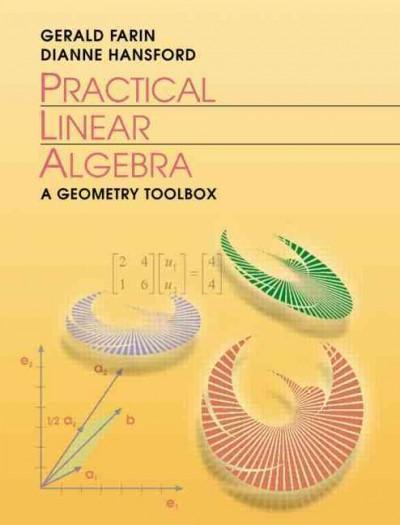Question
Can you please check this over and tell me if I am correct with my answers? Thanks! A professor has been teaching introductory statistics for
Can you please check this over and tell me if I am correct with my answers? Thanks!
A professor has been teaching introductory statistics for many years and the final exam performance has been very consistent from class to class and the scores have been normally distributed. Overall, the whole data base (i.e. population) of final exam scores has a mean () of 25.5 points (out of a maximum of 30 points) and a standard deviation () of 2.5 points. The professor would like to revise the course design to see if student performance on the final exam could be improved.
The new course design was implemented in the most recent academic year. There were 80 students and the average final exam score was 25.7. The professor would like to run a hypothesis test to see if this sample of students in the recent academic year performed significantly better than the past population. In other words, the hypothesis was a comparison between the population taking the course with the new design (represented by the sample of 80 students) with the population taking the course with the old design.
The professor is predicting an increase of final exam score with the new design, so the hypotheses should be directional, and the test should be one-tailed. The significance level is set at = .1.
a. Identify the dependent variable for this study (.5 point)
The dependent variable is the final exam score of students
b. State the null hypothesis and alternative hypothesis using both words and symbol notation.
(2 points total. Each hypothesis is 1 point, with .5 for the written and .5 for the notation)
| Written | Symbolic Symbol bank for copy & pasting: =<>m | |
| Null | The students in the recent academic year performed less than or equal to the past population. | recent< past |
| Alternative | Alternate: Students in the academic year performed significantly better than the past population | H1: recent = past |
c. Calculate standard error (SE, which is the standard deviation of the sampling distribution) Round the result to the hundredth (2nd place to the right of the decimal).(1 point total: deduct .5 if the process is correct but the result was calculated incorrectly)
SE =s/NSE= 2.5/80= 0.28
d. Calculate the Z statistic (which indicates where our sample mean is located on the sampling distribution) Round the result to the hundredth (2nd place to the right of the decimal).(1 point total: 1 if the process is correct but the result was calculated incorrectly)
Z = (M-m)/SE Z= 25.7-25.5/0.28= 0.2/0.28=0.71
e. Determine the critical value for Z. Explain how you come up with the answer. (1 point: .5 for the answer and .5 for the rationale)
Since a= .1I looked for 10% on the Z table and then looked for the corresponding z value. =1.28
f. Compare the Z statistic with the appropriate critical Z value and then draw a conclusion about the result of the hypothesis test. What is the answer to the research question?
- Do you "reject" or "fail to reject" the null hypothesis? (.5 point)
- What is the answer to the research question? (.5 point)
The z statistic (0.71) is more extreme than the critical z value (1.28), the population of the sample is toosmall so we reject the null hypothesis
g. Calculate the standardized effect size for this test. (.5 point, must show the process to earn the credit)
Is this considered a small, medium, or large effect according to the Cohen's d standards? (.5 point)
d= (M-m)/sd=25.7-25.5/2.5= 0.2/2.5=0.08
Step by Step Solution
There are 3 Steps involved in it
Step: 1

Get Instant Access to Expert-Tailored Solutions
See step-by-step solutions with expert insights and AI powered tools for academic success
Step: 2

Step: 3

Ace Your Homework with AI
Get the answers you need in no time with our AI-driven, step-by-step assistance
Get Started


